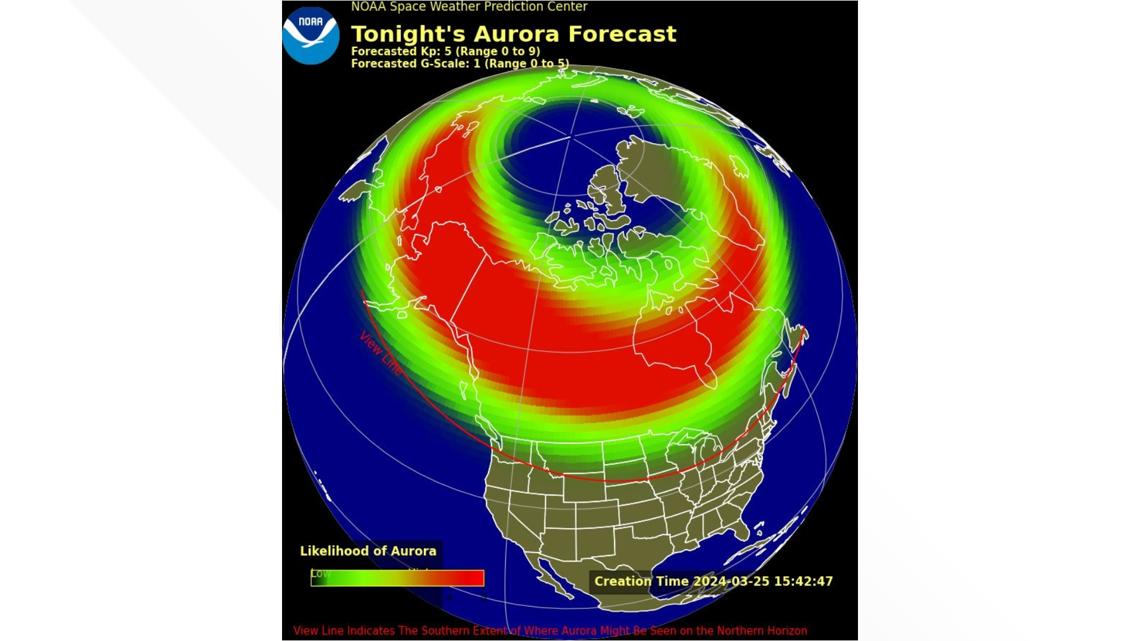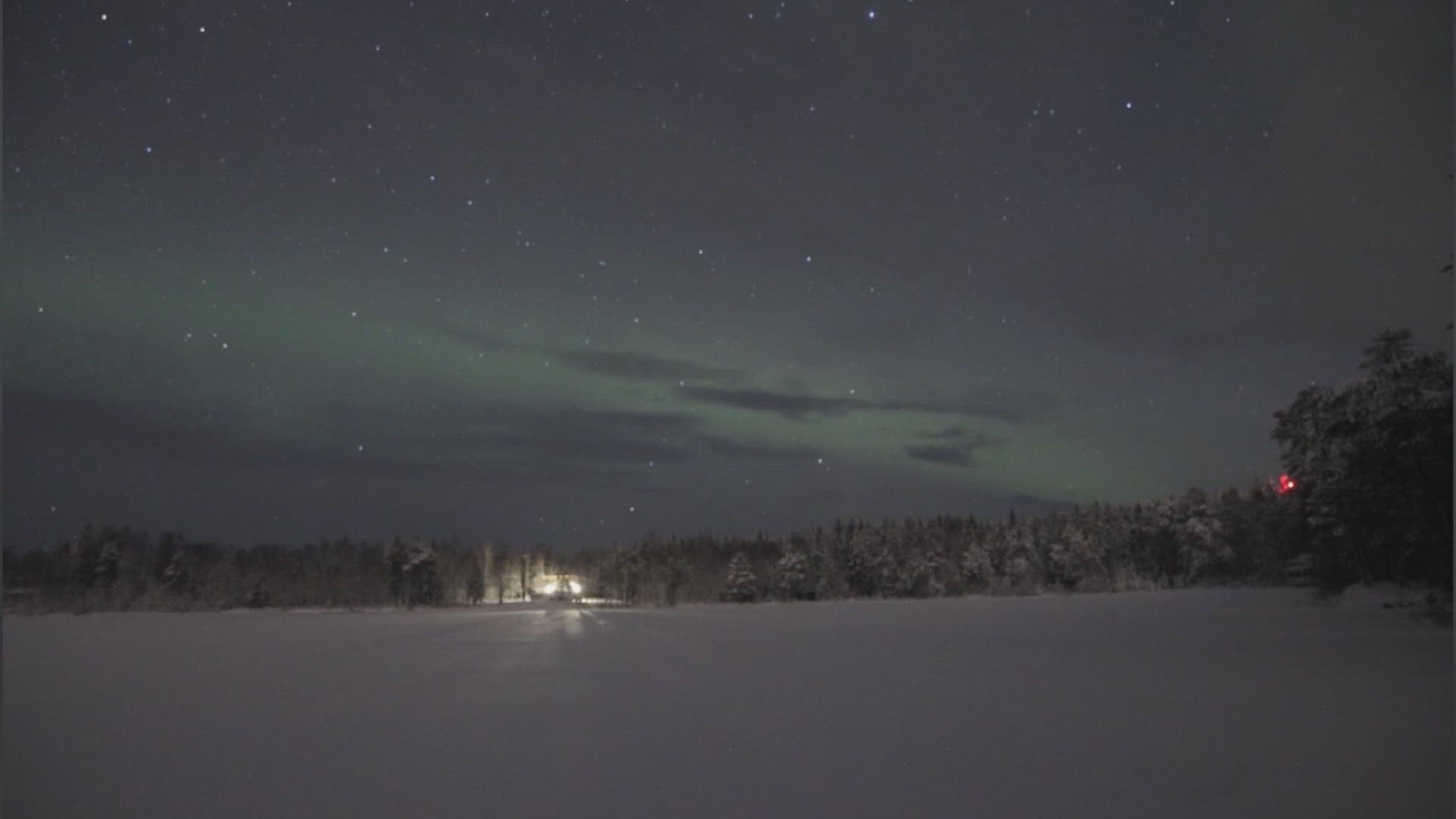SEATTLE — Parts of Washington state could see the Northern Lights on Monday night, although clouds and moonlight will make that difficult.
“It’s not going to be working in our favor,” said KING 5 Meteorologist Ashley Ruiz.
A minor geomagnetic storm is forecast for Monday with a Kp index of 5, according to the National Oceanic and Atmospheric Administration’s Space Weather Prediction Center. The likelihood of seeing the Northern Lights diminish Tuesday as the storm weakens.
The aurora borealis is a glow in the sky produced when electrons trapped in the Earth’s magnetic field are accelerated by the solar wind and collide with atoms in the atmosphere in a ring centered on the magnetic pole of Earth, according to NOAA.


Most of Washington state is within the viewing area of the aurora borealis on Monday with better viewing chances the further north you travel, according to a map from NOAA. Darker areas away from light pollution in cities also provide better viewing.
However, Ruiz said conditions are expected to be mostly cloudy Monday night with chances for spotty cloudbreaks. Track forecasted radar from Monday night into Tuesday morning. below.
A nearly full moon (99% illumination) will also complicate the picture, creating brighter conditions. Moonset isn’t until 7:28 a.m. on Tuesday.
“We have the clouds and moon working against us but still worth checking out,” Ruiz said.
How the aurora borealis is measured: the Kp index
The aurora is measured using the Kp index, which is a scale of 0-9. NOAA’s tips on viewing the aurora share this scale for viewing:
For Kp in the range of 0 to 2, the aurora will be far north, quite dim in intensity, and not very active.
For Kp in the range of 3 to 5, the aurora will move further from the poles. It will become brighter and there will be more auroral activity (motion and formations). If you are in the right place, these aurora can be quite pleasing to look at.
For Kp in the range 6 to 7, the aurora will move even further from the poles and will become quite bright and active. At this geomagnetic activity level, it might be possible to see the aurora from the northern edge of the United States.
For Kp in the range 8 to 9, the aurora will move even further towards the equator and it will become very bright and very active. These are the events that create the best aurora and the extended auroral oval will be observable by most people. At these levels, the aurora may be seen directly overhead from the northern states of the U.S.

